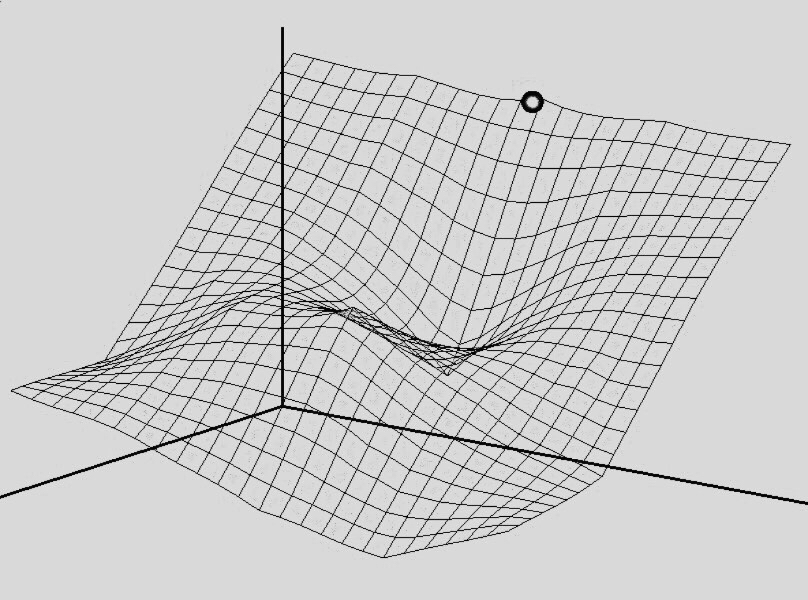The CBIOMES Workshop on Zooplankton in Marine Ecosystem Models was held on April 25-27, 2023, at MIT’s beautiful Endicott House Conference Center.
by Helen Hill for CBIOMES
Last month, twenty-four participants gathered in Dedham, MA, with the goal of advancing work in the CBIOMES collaboration on the role of zooplankton in ocean ecosystem models through a focus on zooplankton data, the way zooplankton are represented in models and model-data intercomparisons
Opening with quick-fire introductory talks where each attendee summarized their goals for the workshop, day one was devoted to plenary presentations reviewing current modeling methodologies in Darwin (Stephanie Dutkiewicz); other models (Camila Serra Pompei); global-scale abundance, biomass, and trait data (Niall McGinty and Zoe Finkel); ASV data (Yubin Raut); and AMT/transect, UVP/global, and time series data (Andrew Irwin, Niall McGinty. and Zoe Finkel.) A panel discussion “Big unknowns in the ocean” (Andrew Irwin, Stephanie Dukiewicz, Camila Serra Pompei, and Niall McGinty) rounded out the day.
Days two and three were then subdivided into four hands-on mini-workshops, two running in parallel each day.
On day two, Stephanie Dutkiewicz led a discussion centering around how to improve the representation of zooplankton ecology in Darwin including appropriate ways to parameterize grazing, how to address missing processes and missing types of plankton, and what data is available to evaluate parameter choices. The Darwin Model is a computer model of marine microbial communities in which a diverse range of generalized organisms are transported by flow fields provided by an underlying general circulation model originally and most commonly MITgcm. The ecosystem structure that emerges is then determined by the relative fitness of the simulated organisms in specific physical, chemical, and predatory environments. While zooplankton are included, their representation is quite rudimentary. The goal of this mini-workshop was to identify and potentially begin to address some of these shortcomings. Stephanie reports, “This workshop consisted of a group discussion on the considerations of increased complexity of zooplankton communities in large-scale models. We first made a list of the main functional groups of zooplankton before outlining key traits (characterizations of zooplankton such as size, and feeding mode). We then delved into how parameters (values, such as maximum grazing rate) related to the traits. After setting up the potential of more complexity we then discussed the kinds of questions we could address with them – including the possibility that complexity in its own right might be necessary to allow ecosystems to more faithfully match with observations. Our final discussion was on some initial experiments that could be explored in Darwin (3d, 1d, or specifically for the DAR_1 working group to follow, 0d).”
Also on day two, Yubin Raut led a Zooplankton amplicon sequence variants (ASVs) workshop. Yubin reports “We utilized three major oceanographic transects in the Pacific, Atlantic, and Indian Ocean to explore the wide diversity of major zooplankton groups captured in the Global rRNA Universal Metabarcoding of Plankton (GRUMP) dataset. One major observation across ocean basins was a greater prevalence of copepod ASVs at the surface ocean and radiolarian ASVs at depth. We further explored the diversity of radiolarian biogeography and observed the dominance of distinct groups in different regions of the ocean. There were many insightful discussions centered around how we can represent the taxonomic diversity of important zooplankton groups within a functional framework to be integrated within global ocean models like Darwin.”
On day three, Barbie Duckworth facilitated work with DAR_1, a unit grid cell implementation of the Darwin Model they and Chris Follett have been developing together. Coded in a single Julia file, which can be run in just a few seconds allows the result of changing (or introducing) individual Darwin parameters to be quickly and efficiently interrogated. Coached by Barbie, participants explored tweaking zooplankton parameters to test the resulting impacts on community structure. Barbie reports “Using DAR_1, we examined the impact of three different food web structures in a zero-dimensional Darwin environment and briefly looked at how the community structure changed with temperature. The Darwin model is traditionally run with predators eating prey 1/10th their size. In these experiments, an additional class of predators was added, preferring prey 1/3rd their size, 1/30th, or twice as large. Preliminary results showed that predator-prey preferences do impact community structure and DAR1 might be a useful tool for exploring these impacts.”
Also on day three, the mini-workshop led by Niall McGinty provided an opportunity to explore the extensive library of zooplankton data he and co-organizers had compiled for the meeting. Niall reports “The goal of this workshop was to understand what we can learn from data to inform zooplankton dynamics in the Darwin model. In particular, can we define what traits or species groups to focus on and can we integrate the vast array of different zooplankton data that is now available (nets, imaging, ASV’s, etc.) We began by comparing the zooplankton size fractions at the HOT and BATS time series. We then examined the Continuous Plankton Recorder (CPR) data in the North Atlantic and looked at the spatial distribution of several important ratios (zooplankton vs phytoplankton; carnivores vs herbivores) that could be used to assess zooplankton dynamics in Darwin. Finally, we looked at the AMT transect from the Atlantic and compared size spectra measurements with those computed from Darwin. While we explored just a small sub-sample of the data that had been collated for the workshop, we identified a number of key areas and indicators for future comparisons between data and model to further improve zooplankton measurements in Darwin.”
Special thanks to all our plenary speakers, Stephanie Dutkiewicz, Zoe Finkel, Camila Serra Pompei, and Yubin Raut, and workshop organizers (and plenary speakers) Andrew Irwin and Niall McGinty, and, of course, to the generosity of the Simons Foundation for underwriting this activity.
Story Image: Attendees of the CBIOMES Workshop Zooplankton in Marine Ecosystem Models, MIT Endicott House, Dedham, MA, April 2023 – image credit: H. Hill


